Related Research Articles
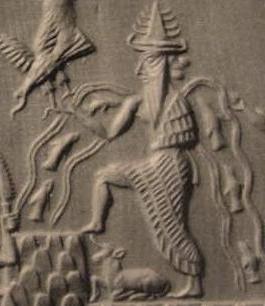
Enki is the Sumerian god of water, knowledge (gestú), crafts (gašam), and creation (nudimmud), and one of the Anunnaki. He was later known as Ea or Ae in Akkadian (Assyrian-Babylonian) religion, and is identified by some scholars with Ia in Canaanite religion. The name was rendered Aos in Greek sources.

Eridu was a Sumerian city located at Tell Abu Shahrain, also Abu Shahrein or Tell Abu Shahrayn, an archaeological site in Lower Mesopotamia. It is located in Dhi Qar Governorate, Iraq, near the modern city of Basra. Eridu is traditionally considered the earliest city in southern Mesopotamia based on the Sumerian King List. Located 24 kilometers south-southwest of the ancient site of Ur, Eridu was the southernmost of a conglomeration of Sumerian cities that grew around temples, almost in sight of one another. The city gods of Eridu were Enki and his consort Damkina. Enki, later known as Ea, was considered to have founded the city. His temple was called E-Abzu, as Enki was believed to live in Abzu, an aquifer from which all life was thought to stem. According to Sumerian temple hymns, another name for the temple of Ea/Enki was called Esira (Esirra).
"... The temple is constructed with gold and lapis lazuli, Its foundation on the nether-sea (apsu) is filled in. By the river of Sippar (Euphrates) it stands. O Apsu pure place of propriety, Esira, may thy king stand within thee. ..."

Akkadian is an extinct East Semitic language that was spoken in ancient Mesopotamia from the third millennium BC until its gradual replacement in common use by Old Aramaic among Assyrians and Babylonians from the 8th century BC.
Kish is an important archaeological site in Babil Governorate (Iraq), located 80 km (50 mi) south of Baghdad and 12 km (7.5 mi) east of the ancient city of Babylon. The Ubaid period site of Ras al-Amiyah is 8 km (5.0 mi) away. It was occupied from the Ubaid period to the Hellenistic period. In Early Dynastic times the city's patron deity was Ishtar with her consort Ea. Her temple, at Tell Ingharra, was (E)-hursag-kalama. By Old Babylonian times the patron deities had become Zababa, along with his consort, the goddess Bau and Istar. His temple Emeteursag was at Uhaimir.

Assyriology, also known as Cuneiform studies or Ancient Near East studies, is the archaeological, anthropological, historical, and linguistic study of the cultures that used cuneiform writing. The field covers Pre Dynastic Mesopotamia, Sumer, the early Sumero-Akkadian city-states, the Akkadian Empire, Ebla, the Akkadian and Imperial Aramaic speaking states of Assyria, Babylonia and the Sealand Dynasty, the migrant foreign dynasties of southern Mesopotamia, including the Gutians, Amorites, Kassites, Arameans, Suteans and Chaldeans. Assyriology can be included to cover Neolithic pre-Dynastic cultures dating to as far back as 8000 BC, to the Islamic Conquest of the 7th century AD, so the topic is significantly wider than that implied by the root "Assyria".

Anzû, also known as dZû and Imdugud, is a monster in several Mesopotamian religions. He was conceived by the pure waters of the Abzu and the wide Earth, or as son of Siris. Anzû was depicted as a massive bird who can breathe fire and water, although Anzû is alternately depicted as a lion-headed eagle.

Etana was the thirteenth king of the first dynasty of Kish, according to the Sumerian King List. He is listed as the successor of Arwium, the son of Mashda, as king of Kish. The list also calls Etana "the shepherd, who ascended to heaven and consolidated all the foreign countries", and states that he ruled 1,560 years before being succeeded by his son Balih, said to have ruled 400 years. The kings on the early part of the SKL are usually not considered historical, except when they are mentioned in contemporary Early Dynastic documents. Etana is one of them.
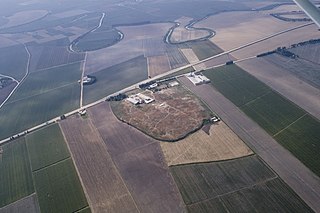
Tell Ta'yinat is a low-lying ancient tell on the east bank at the bend of the Orontes River where it flows through the Amuq valley, in the Hatay province of southeastern Turkey about 25 kilometers south east of Antakya, and lies near Tell Atchana, the site of the ancient city of Alalakh. Tell Ta'yinat has been proposed as the site of Alalaḫu, inhabited in late 3rd millennium BC, mentioned in Ebla's Palace G archive; and in later times as Kinalua, the capital city of an Iron Age Neo-Hittite kingdom. Among the findings are an Iron Age temple and several 1st millennium BC cuneiform tablets. Chatal Huyuk (Amuq) is another major site that is located in the area.

Simo Kaarlo Antero Parpola is a Finnish Assyriologist specializing in the Neo-Assyrian Empire and Professor emeritus of Assyriology at the University of Helsinki.

Miguel Civil was an American Assyriologist and expert on Sumer and Ancient Mesopotamian studies at the University of Chicago Oriental Institute. According to his colleague, Christopher Woods, at the time of his death, Civil knew the Sumerian language better than anyone since it was last spoken 4000 years ago.
Ancient Near Eastern Texts Relating to the Old Testament edited by James B. Pritchard is an anthology of important historical, legal, mythological, liturgical, and secular texts in biblical archaeology.
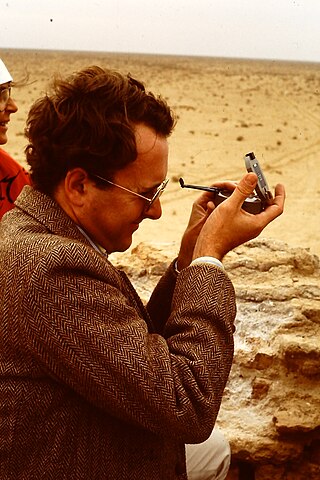
Jeremy Allen Black was a British Assyriologist and Sumerologist, founder of the online Electronic Text Corpus of Sumerian Literature.
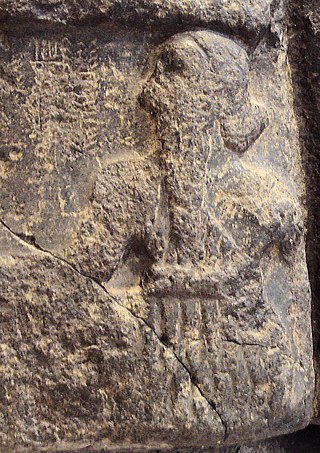
Sargon of Akkad, also known as Sargon the Great, was the first ruler of the Akkadian Empire, known for his conquests of the Sumerian city-states in the 24th to 23rd centuries BC. He is sometimes identified as the first person in recorded history to rule over an empire.
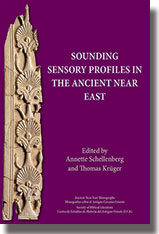
Ancient Near East Monographs is an open-access monograph series focused on the Ancient Near East, including ancient Israel and its literature, from the early Neolithic to the early Hellenistic eras. It is published jointly by the Society of Biblical Literature and the Center of Studies of Ancient Near Eastern History (CEHAO). The Society publishes books and journals.
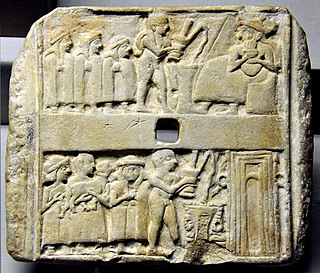
Sumerian religion was the religion practiced by the people of Sumer, the first literate civilization found in recorded history and based in ancient Mesopotamia, and what is modern day Iraq. The Sumerians widely regarded their divinities as responsible for all matters pertaining to the natural and social orders of their society.
James Vincent Kinnier Wilson was a British Assyriologist. He was Eric Yarrow Lecturer, from 1955 until 1989, and Emeritus Fellow, Wolfson College, Cambridge.

Enlil and Ninlil, the Myth of Enlil and Ninlil, or Enlil and Ninlil: The begetting of Nanna is a Sumerian creation myth, written on clay tablets in the mid to late 3rd millennium BC.

The Song of the hoe, sometimes also known as the Creation of the pickaxe or the Praise of the pickaxe, is a Sumerian creation myth, written on clay tablets from the last century of the 3rd millennium BCE.
Karen Radner is an Austrian Assyriologist, the Alexander von Humboldt Professor of Ancient History at the University of Munich.
References
- ↑ Jerrold S. Cooper; Glenn M. Schwartz (1996). The study of the ancient Near East in the twenty-first century . Pennsylvania State University Press. ISBN 978-0-931-46496-6.
- ↑ Columbia
- ↑ NYU ISAW
- ↑ ABZU links for all aspects of the Ancient Near East. Archived 2004-01-13 at the Wayback Machine
- ↑ Stanisław Bazyliński A Guide to Biblical Research: Introductory
- ↑ etana
- ↑ Electronic Text Corpus of Sumerian Literature